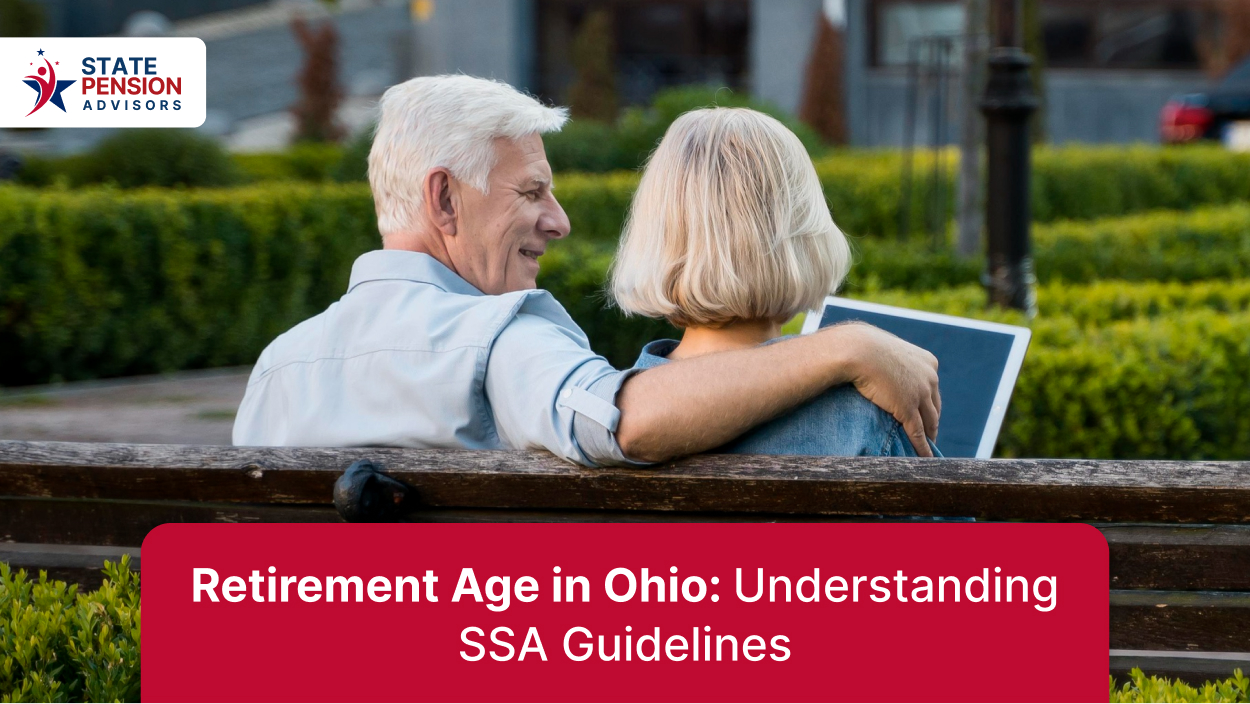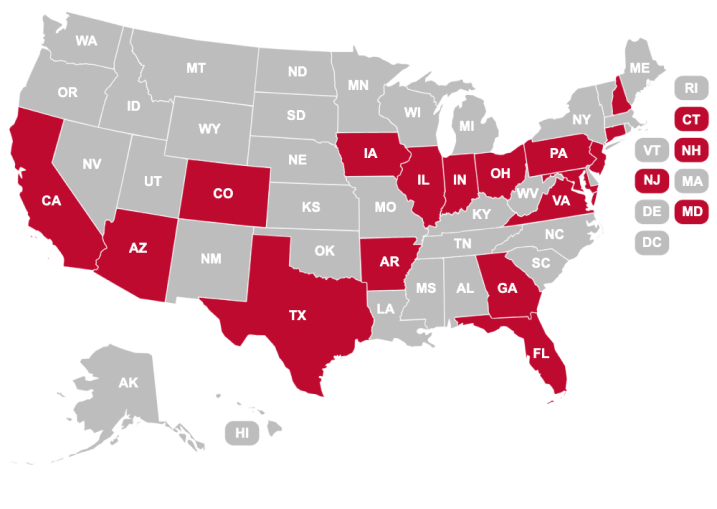Retirement Age in Ohio: Understanding SSA Guidelines

The retirement age in Ohio depends on whether you are claiming Social Security benefits or are part of a state retirement system, such as SERS or STRS.
For Social Security, your full retirement age is likely 67, while early retirement is available at 62 with a reduced benefit. For state retirement, eligibility varies based on years of service and age, with specific rules for SERS and STRS members.
Each system has its own rules for eligibility, benefits, and reductions. Knowing how they work together can help you make smarter financial decisions before stepping into retirement.
1. Social Security Retirement Age in Ohio
Although Social Security rules are the same across the U.S., Ohioans rely heavily on these benefits as part of their retirement income. According to the Social Security Administration (SSA), you can begin collecting retirement benefits as early as age 62. However, your full retirement age (FRA) depends on your year of birth.
- For those born in 1960 or later, the full retirement age is 67.
- For those born between 1943 and 1954, it’s 66.
- For those born between 1955 and 1959, it gradually increases from 66 to 67.
If you claim benefits early (before your FRA), your monthly benefit amount is permanently reduced. For example, if you start at age 62, your benefits will be around 70% of what they would be if you waited until 67.
This reduction is applied on a monthly basis, meaning every month you claim early results in a slightly smaller benefit. On the other hand, if you delay claiming benefits after your FRA (up to age 70), you earn delayed retirement credits, which increase your monthly payment.
2. Early vs. Full Retirement
The SSA emphasizes that claiming early isn’t always a disadvantage — it depends on your situation. Some people prefer an early retirement for personal or health reasons, while others choose to wait for the larger benefit.
Here’s how it typically breaks down:
- Age 62: You receive about 70% of your full benefit (if born in 1960 or later).
- Age 65: You receive about 86.7% of your full benefit.
- Age 67: You receive 100% of your full benefit.
- Age 70: You can receive up to 124% of your full benefit due to delayed retirement credits.
The SSA’s calculator and planning tools allow you to see your exact benefit estimates depending on your claiming age.
3. Working While Receiving Benefits
If you start receiving Social Security before reaching your full retirement age and continue to work, your benefits may be temporarily reduced.
For 2025, if you’re under your full retirement age for the entire year, SSA deducts $1 from your benefit for every $2 you earn above $23,400. In the year you reach full retirement age, SSA deducts $1 for every $3 you earn above $62,160, but only until the month you turn your FRA.
After reaching your full retirement age, there’s no limit on how much you can earn. Your benefits will no longer be reduced. And if any benefits were withheld because of your earnings, SSA will recalculate and increase your future payments to make up for those months.
4. How SSA Calculates Your Benefit
Your Social Security benefit is based on your highest 35 years of earnings, adjusted for inflation. If you have fewer than 35 years of earnings, zeros are averaged in, which can lower your benefit.
For many public employees in Ohio, such as teachers and school workers, some positions don’t pay into Social Security. In that case, your benefits may be affected by two special rules:
- Windfall Elimination Provision (WEP): Reduces your Social Security benefit if you also receive a pension from a job not covered by SSA.
- Government Pension Offset (GPO): May reduce your spouse or survivor benefits under Social Security.
These adjustments ensure fairness across the system, but it’s important to plan if you work in government or education.
Also read - when can a texas teacher retire
5. Retirement Systems in Ohio
Apart from Social Security, Ohio’s state workers are covered under three major retirement systems. Each has its own eligibility criteria based on age and years of service.
Ohio Public Employees Retirement System (OPERS)
- Full Retirement: As early as age 55 with 32 years of service, or at 67 with at least 5 years.
- Reduced Retirement: Available at 57 with 25 years, or 62 with 5 years.
School Employees Retirement System (SERS)
- Full Retirement (for those not grandfathered in):
- Age 67 with 10 years of service, or
- Age 57 with 30 years of service.
- Age 67 with 10 years of service, or
- Early Retirement:
- Age 60 with 5 years of service, or
- Age 55 with 25 years of service.
- Age 60 with 5 years of service, or
State Teachers Retirement System (STRS)
- Unreduced Benefit: From June 1, 2025, requires 33 years of service at any age, or 5 years at age 65.
- Reduced Benefit: Available at age 60 with 5 years of service.
6. Combining Social Security and Ohio Retirement
If you are eligible for both SSA and a state pension, you’ll receive two separate income streams. However, your Social Security may be adjusted if your state job didn’t pay into it.
For example, a teacher who retires under STRS might still qualify for SSA based on earlier private-sector work. But due to WEP, their SSA benefit could be lower than the standard amount. For that you must understand the retirement planning process.
The key is to coordinate both plans carefully:
- Decide whether to claim SSA early or delay it based on your pension income.
- Check whether your job contributions were covered under Social Security.
- Consider tax implications, healthcare, and inflation adjustments before finalizing your retirement date.
7. Making the Right Decision
The right retirement age is not the same for everyone. It depends on your financial needs, health, career type, and long-term plans. Here are a few tips:
- Plan early: Use SSA’s online tools to estimate your benefits.
- Coordinate income: Align your pension and SSA payments for smoother cash flow.
- Avoid rushed decisions: Claiming early might seem tempting, but it can cost you in long-term monthly income.
- Check for updates: SSA periodically revises income limits and benefit formulas. Stay informed to make the right decisions.
Final Thoughts
In summary, the retirement age in Ohio varies depending on the system you are part of, whether it is Social Security, OPERS, STRS, or SERS. While Social Security provides full benefits between ages 66 and 67, state retirement systems follow their own eligibility rules based on age and years of service. Understanding these distinctions is key to making informed decisions and ensuring a financially comfortable retirement.
Consider speaking with a financial advisor today to create a plan that secures your future.
Content References:
https://smartasset.com/retirement/what-is-the-retirement-age-in-ohio
https://www.ssa.gov/benefits/retirement/planner/agereduction.html
https://www.ssa.gov/pubs/EN-05-10035.pdf
Content Disclaimer
The information provided in this article is for educational and informational purposes only. It is based on publicly available data from the Social Security Administration (SSA) and other official sources as of the date of publication. This content does not constitute legal, financial, or retirement advice.
Retirement eligibility, benefits, and SSA rules may change over time, and individual circumstances can significantly affect outcomes. Readers are encouraged to verify details directly with the SSA or consult a licensed financial or retirement advisor before making any decisions related to retirement planning.










.png)
.png)
%20Beneficiary%20Everything%20You%20Should%20Know%20as%20a%20State%20Employee.jpg)
%20Plan%20Options%20Everything%20You%20Should%20Know.jpg)








